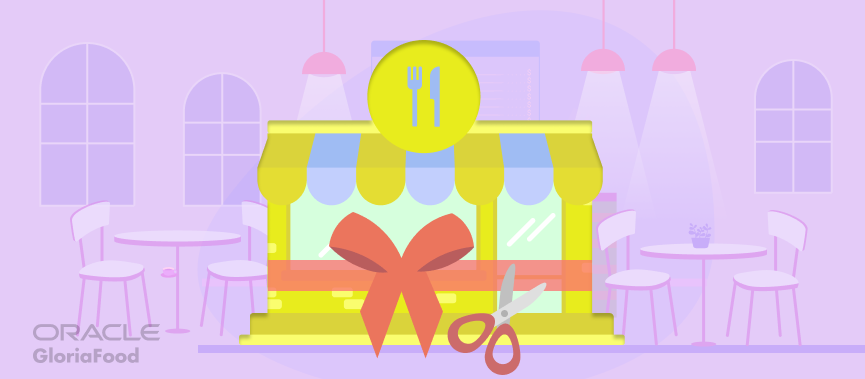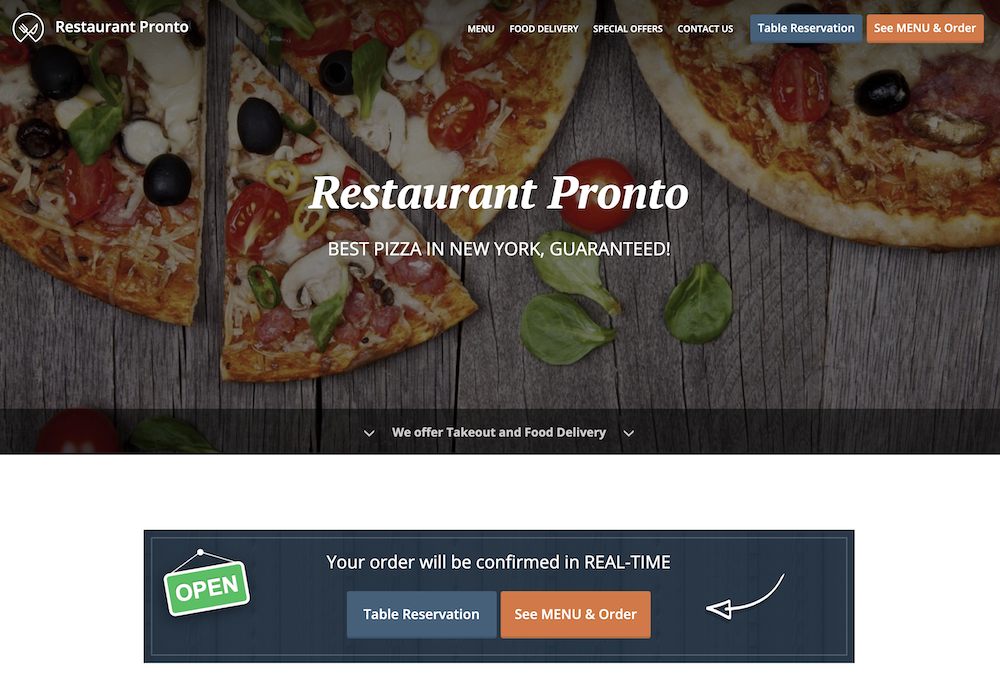Do you have a passion for cooking that you want to turn into a business? Are you finally taking the big step of turning your pop-up into a restaurant? Do you have a sum of money that you want to invest in a restaurant?
No matter the reason that motivates you to open a restaurant, before you take any further steps, you must sit down and calculate your restaurant startup costs.
Knowing all the necessary expenses for opening a restaurant will help you estimate a rough budget and afterward, make decisions that improve your profit and guarantee you will survive the first year in the industry.
Restaurant Startup Costs Breakdown
Running a restaurant comes with three main types of costs:
- Restaurant startup costs: some of these will be one-and-done types of costs and others will be recurring;
- Restaurant food costs: these encompass all the expenses necessary to prepare, store, serve, and deliver food;
- Restaurant overhead costs: costs necessary for operating a restaurant (that you would pay even when the restaurant is closed), such as rent, utilities, and salaries;
In this article, we will be focusing only on restaurant startup costs as this is also the first budget you will have to create for your business.
To make it easier for you to calculate, we’ve broken the expenses into categories:
1. Location costs
This is an obvious and compulsory expense, but the end cost will depend on several factors. First of all, which of the following are you planning on?
- Buying: it is a big expense to take on at first, especially when you don’t know if your business will succeed. But, if you can afford it, it gives you the liberty to treat the space as you want and not have to worry about landlord interaction;
- Renting: usually, you have to sign a contract for a few years and have to pay a deposit for up to six months. It is a smaller investment upfront, but, you must be aware the landlord may up the pricing in the future.
Other elements that influence the restaurant location costs are:
- The area where your restaurant will be situated: a space in the center of a city will be considerably more expensive than one at the periphery. Before committing to a location, you should visit the area multiple times to see if it is easily accessible and what potential audience you will have;
- How big the space is: do you plan on starting small with only five tables or are you going big with over twenty? Maybe you plan on starting a virtual restaurant, in which case you only need the kitchen space.
2. Renovations
Whether you rent or buy, you will have to factor in renovations in the restaurant startup costs. There is a small chance you will find a place that used to be a food business, so you will have to perform quite a big transformation to get it ready for clients.
The renovation costs will depend on the look you want to achieve, the original state of your location, and your target audience. They will include:
- Painting
- Flooring
- Counter spaces
- Seating spaces
- Lighting
- Decor
If you want to cut down costs, only focus on getting the basics at the start, until you can use some of the profit to improve the space. Moreover, you can also DIY some décor items such as picture frames or accent walls.
3. Kitchen equipment
You will need a variety of equipment to make the job easier for your staff and ensure you give clients a remarkable experience. Here is what you should budget for in your restaurant startup costs:
- Large appliances: stoves, ovens, fridge, freezer, dishwasher, coffee machine, bread machine, etc;
- Cooking equipment: small utensils such as pots, pans, knives, ladles, strainers, etc;
- Bar equipment: mixers, shakers, ice cube machine, etc;
- Service equipment: everything necessary to serve clients from plates, cutlery, and service platers to tablecloths and glassware;
To spend less in the long run, look for energy-efficient equipment that is made to last because it will use less power to work. You can also have an eye out for secondhand options from restaurants that went under.
4. Restaurant technology
Gone are the days of accepting orders by phone and having servers note down the orders on a notepad. The old way opens any restaurant up to errors that can lead to unhappy customers who leave negative reviews and deter others from visiting your business.
To automate some of your processes and run an efficient restaurant, you will need to factor in the following technology in your restaurant startup costs:
- Employee scheduling software: to ensure your employees are satisfied with their working hours while maintaining transparency;
- POS (point-of-sales) system: a piece of hardware and software equipment to enable employees to make sales and accept payments;
- Online ordering system: to increase your sales by selling your food online. You can use the efficient online ordering system from GloriaFood that will not only streamline your online ordering process, but it is also free;
- Table reservation system: to better organize your tables and increase occupancy. GloriaFood also offers a free table reservation system that you can add to your website in minutes;
- Kitchen display system: the orders placed in the restaurant or online are automatically shown to the staff in the kitchen.
5. Permits and licenses
To open your doors to the public, you must first be able to legally run your business. This implies getting several permits and licenses that vary by country and state. Here are the most common ones that will add up to your restaurant startup costs:
- Food service license
- Liquor license
- Business license
- Building health permit
Check with the authorities in your location to ensure you have all the valid permits and licenses before you start selling your food.
Also consider the regional differences in regulations that come into play depending on the structure you choose for your business.
For instance, there are specific requirements and procedures for LLC formation in Wyoming, and these are entirely distinct from the rules that apply elsewhere in the country. Being thorough at this early stage will avoid regulatory repercussions later on.
6. Marketing costs
How would you feel if, on the opening day, you were confronted with an empty restaurant? This is a real possibility if you ignore marketing when you budget for your restaurant startup costs.
Promoting your restaurant will create a buzz around your business and get people interested in trying your food from the very first day.
Here is what should be a part of your marketing budget for launching a new restaurant:
- A Restaurant Website: this should be your main focus because your clients will be looking for it every time they research your restaurant. You will also be linking to it from your Google Business Profile, social media platforms, and review sites. You can get a restaurant website that converts visitors to clients from GloriaFood, for less than the price of a pizza. It is delivered to you completely customized to your type of cuisine and already SEO-optimized so that you can rank high in Google searches;
At the same time, you should not neglect the security of your restaurant business data by using a business password manager, VPNs, and antivirus systems.
- Paid advertisements on social media: while social media is usually marketed as a free way to promote your business, this is not the case if you are just starting. Nobody knows about your place, so you need to reach a bigger audience fast. Paid advertisements can help you get your message out to a large number of people. Start with teasers of your delicious food and location and graduate to a small promotion on opening day to get orders.
7. Personnel costs
Your staff’s salaries will make up a large part of your restaurant startup costs. If you want to have an accurate budget, you must decide from the start how many employees you need according to the predicted sales.
Here are a few tips for getting an almost precise estimation of personnel costs:
- Include training: you will need to teach your staff to do things the way you expect, including standing by restaurant standard operating procedures;
- Add extras for onboarding: you may need liability insurance or a food handling permit for each member of your team. You should also provide uniforms and other equipment necessary for the job;
- Don’t forget external employees: you will also need an accountant and lawyer to legitimize your business, so include their salaries in the budget.
8. Costs for menu creation
Ingredients needed for food preparation are usually included in restaurant food costs. But, you will still need food when you launch your restaurant, so you better budget the costs for menu creation for at least a week, preferably a month.
Speaking of the menu, you don’t just have to buy ingredients, you also have to create a menu that lists all of the available dishes. You can do so easily by using the intuitive menu creator from GloriaFood which generates a restaurant menu that is easy to use for clients.
And the best part? It is free! You can impress clients with an unforgettable menu while lowering your restaurant startup costs.
If you want to save even more money, say goodbye to printed menus that need to be replaced often and embrace a QR code menu. All you have to do is add a flyer with the code on every table for clients to be able to browse your food options, order, and pay at the table.
Final Words
Calculating your restaurant startup costs is the first step towards owning a food business that survives the test of time. To ensure profitability even from the start, take advantage of free and cheap technology like our online ordering system and QR code menu.
Moreover, beyond the initial investments in location and technology, ensuring the financial security and longevity of your restaurant also requires safeguarding its assets. To have your assets secured through professional asset protection services can provide an added layer of defense against unforeseen legal or financial hurdles, further securing your business’s future.


